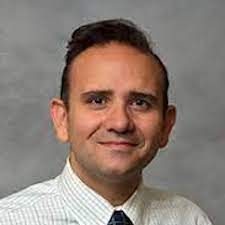C Difficile Rates High Following Allogenic Hematopoietic Stem Cell Transplantation
Fluoroquinolones use within 14 days of transplantation was 1 of the strongest risk factors for C difficile infections.
Karam Obeid, MD

Clostridioides difficile infections (CDI) are more prevalent following allogeneic hematopoietic stem cell transplantation (allo-HCT) compared to solid organ transplants (SOT).
A team, led by Karam M. Obeid, MD, Division of Infectious Diseases and International Medicine, University of Minnesota, compared the demographic and clinical characteristics of C difficile patients and identified risk factors and outcomes in allogeneic hematopoietic stem cell and solid organ transplant recipients.
The Study
In the study, the team analyzed the risk factors and outcomes that occurred within 30 days of the transplantation, identifying 466 allo-HCT procedures and 1454 solid organ transplantation procedures between March 2010 and June 2015 at the University of Minnesota. Both the CDI and control groups were examined 30 days following transplantation.
The cumulative incidence rate of CDI was 10% (95% CI, 8-13) for allo-HCT and 4% (95% CI, 3-5) for solid organ transplantation (P <0.01). These infections occurred at a median range of 7.5 days and 11 days, respectively (P = 0.18).
Risk Factors
After conducting a multivariate analysis, the investigators identified multiple risk factors.
For example, fluoroquinolones use within 14 days prior to transplantation was a risk factor for CDI following allo-HCT (HR, 4.06; 95% CI, 1.31-12.63; P = 0.02). Another risk factor was thoracic organ transplantation following solid organ transplantation for lung (HR, 3.03; 95% CI, 1.31-6.98) and heart and/or kidney transplantation (HR, 3.90; 95% CI, 1.58-9.63) (P = 0.02, for both).
Both sets of patients had higher lengths of stay with CDI compared to non-CDI patients (allo-HCT: 35 days; 95% CI, 19-141 vs. 29 days; 95% CI, 13-164, P <0.01; SOT: 16.5 days; 95% CI, 4- 101 vs. 7 days; 95% CI, 0- 159, P <0.01).
However, this was not attributed directly to the C difficile infection.
Other Results
Patients with CDI also had more severe acute graft vs. host disease (aGVHD) (33.3% vs. 15.8% without CDI; P = 0.01).
The majority of aGVHD (87.5%) followed C difficile.
Non-relapse mortality and overall survival that was not attributed to CDI was similar in both patient groups.
“Early post-transplant CDI is frequent, associated with fluoroquinolones use in allo-HCT and the transplanted organ in SOT, and is associated with longer LOS in both the groups without difference in survival but with increased aGVHD in allo-HCT,” the authors wrote. “The cumulative incidence of CDI was higher in allo-HCT compared to SOT recipients.”
Background
These results are consistent with previous studies that showed higher CDI rates following all-HCT (31.2 per 100) compared to lung transplantation (13.1 per 100).
One possible explanation as to why allo-HCT patients have a higher risk of CDI is that they are generally exposed to more antibiotics, particularly fluoroquinolones.
The incidence of CDI might be as low as 3% following kidney transplantation, but as high as 33% following and lung and lung/heart transplantation. The incidence of infection is also at its highest within 3 months of transplantation.
There are several known risk factors for infection, including age, severe underlying disease, uremia, gastrointestinal surgery, the presence of nasogastric or endotracheal tube and prolonged hospitalization.
Other risk factors for solid organ transplantation patients include immunosuppression, and the use of high-risk antibiotics and gastric-acid suppressing medications.
For patients who underwent allo-HCT, the rates of CDI was above 25% within the first year. Some risk factors for this group are intensified immunosuppression, prolonged hospital stay, and antimicrobial exposure.